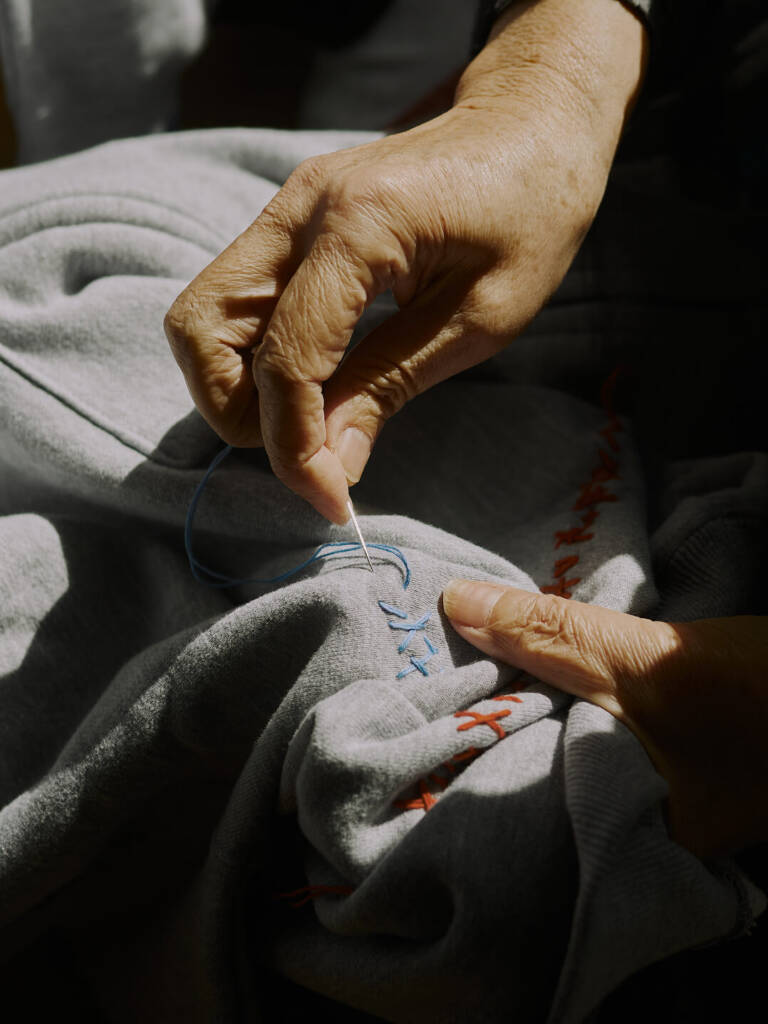


In the coastal town of Ōtsuchi, Iwate, the Sashiko Gals—a collective of women aged 40 to 80—have transformed the traditional Japanese stitching art of sashiko into a luxury-fashion phenomenon rooted in a deep sense of craft and community. With each piece masterfully made by hand, the group preaches sustainability through their intentional scarcity. Emerging in the wake of the 2011 disaster, their distinctive needlework has evolved into sought-after collaborations with some of the world’s leading fashion brands. In March 2025, they launched their first capsule with C.P. Company: 15 individually hand-stitched outerwear pieces in Chrome-R fabric, each one-of-a-kind. Meanwhile, their bespoke work for Veja and Maison Margiela, to name a few, has further cemented their cult status in fashion circles as an impossible must-have. Through these collaborations, the Sashiko Gals have raised artisanal craft to runway status—stitching heritage and Japanese craftsmanship into the world of high fashion, one bespoke piece at a time.
hube: There’s poetry in Sashiko—this act of weaving, braiding, and connecting threads to create something stronger and more resilient than the fabric before. It feels fitting that this became the medium for a group born from the work of repair—of garments, of homes, of lives. How has the Sashiko Gals collective evolved over the years, and how have your values and modes of communication changed as you began working within the luxury fashion world?
Arata Fujiwara: Although the environment around us has changed dramatically, our everyday lives remain the same. We still go to the mountains in the morning to gather wild vegetables and chat with the same friends as always. Perhaps it differs from person to person, but since we are women with strong character and a wealth of life experience, I don’t feel that we ourselves have changed very much.
h: We often speak of the quiet wisdom carried by women—mothers passing down recipes, remedies, and stories to their daughters. What kind of strength do you think emerges from women joining forces through craft and community, and what might others learn from the way you work together?
AF: I feel a deep, unwavering kind of strength within them. Perhaps it comes from being grounded in the Japanese tradition of Sashiko itself. I’ve never really thought about what others might learn from us, but if someone sees our work and feels inspired to try it themselves, that makes me happy.
h: The Sashiko Gals are celebrated collaborators—Maison Margiela, Veja, Nike—yet your lives remain rooted in the small coastal town of Ōtsuchi. How do you reconcile these two identities: the global and the local, the collective and the individual? Has this duality required a kind of inner reconciliation as well?
AF: In my case, and for our creative team as well, we are based in Tokyo, so we naturally embody both the global and local sides. At the same time, all of us have deep respect for Ōtsuchi, and that respect allows everything to stay in harmony quite naturally.
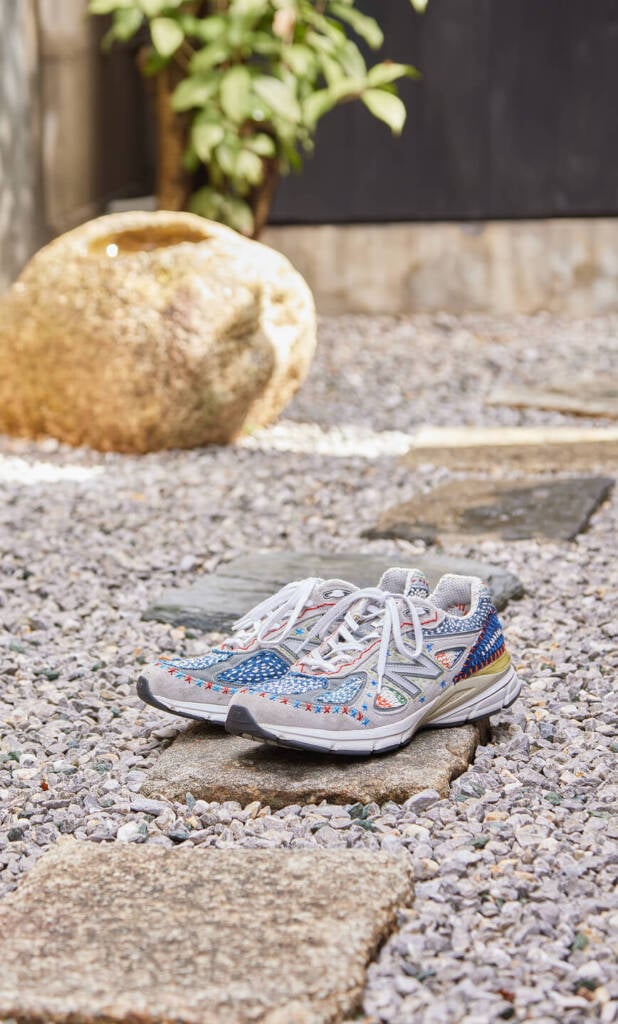
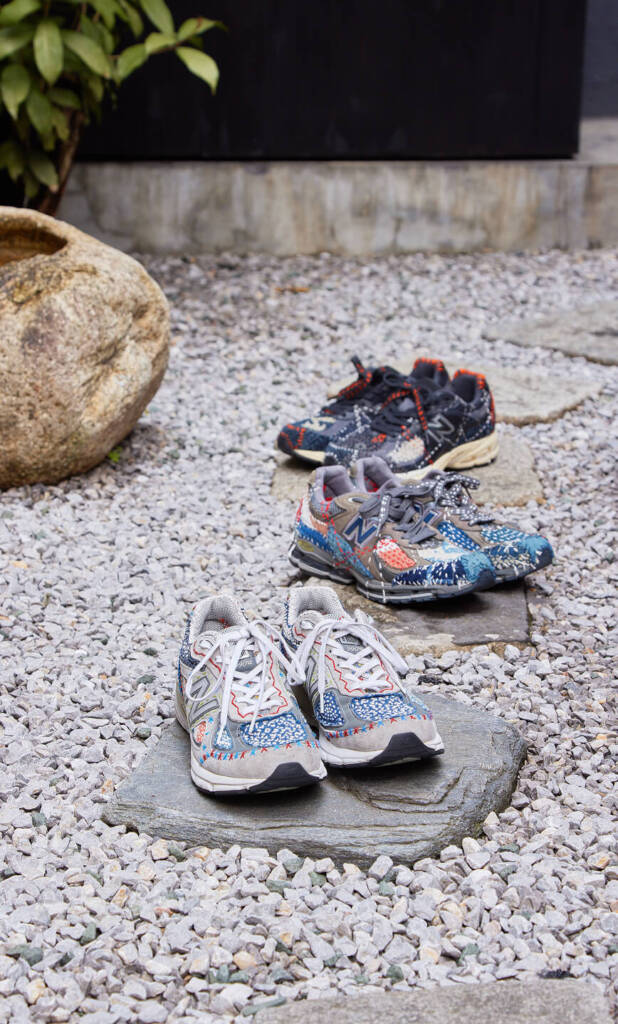
h: The group grew out of the Otsuchi Sashiko Project, initiated by Kuon as part of post-disaster recovery. What compelled you to create this initiative, and what were your hopes for what it might become at the time?
AF: At KUON, we run several social business projects that utilise traditional Japanese craft techniques, not only the Ōtsuchi Sashiko Project. For example, we’ve worked on natural dye initiatives and weaving projects with groups of people with disabilities. Among them, the Ōtsuchi Sashiko Project was born in the aftermath of the Great East Japan Earthquake, which struck right after I founded the company. As our philosophy has always been ‘addressing social issues through design’, the project felt like a very natural extension of that mission.
h: Sustainability has been a defining value for both Kuon and the Sashiko Gals. How do you approach sustainability—not only in terms of materials, but in the sense of sustaining community, heritage, and dignity through work?
AF: That’s a very important question. For me, sustainability is not a marketing term—it means taking responsibility, including for people and the planet, and making continuous efforts to ensure that things endure. Our practice is guided by three goals: to share and preserve the culture of Sashiko with the world, to expand a project that began as post-disaster recovery into something globally connected, and to create and sustain local industry in our hometown.
h: In a time of mass production and fast consumption, do you think scarcity—or the deliberate slowing down of creation—can serve as a kind of remedy? How do you think about the relationship between limitation and value?
AF: I don’t think there’s a direct connection. Our work naturally takes time, so it may appear slow or rare, but that’s just a result of the process. What truly matters is whether the work itself has value—whether it brings a sense of healing to those involved, regardless of scale or rarity. Sashiko has a meditative quality, similar to Zen or yoga—it calms the mind. When the people who make it feel peace and balance through their work, that feeling, I believe, is passed on to the people who receive it.



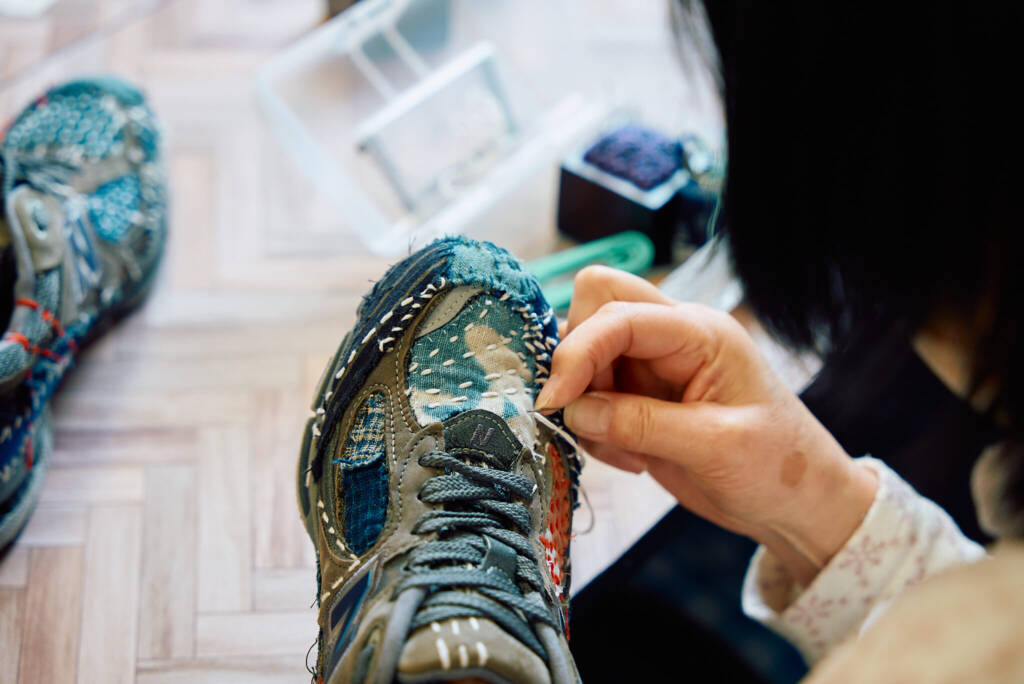

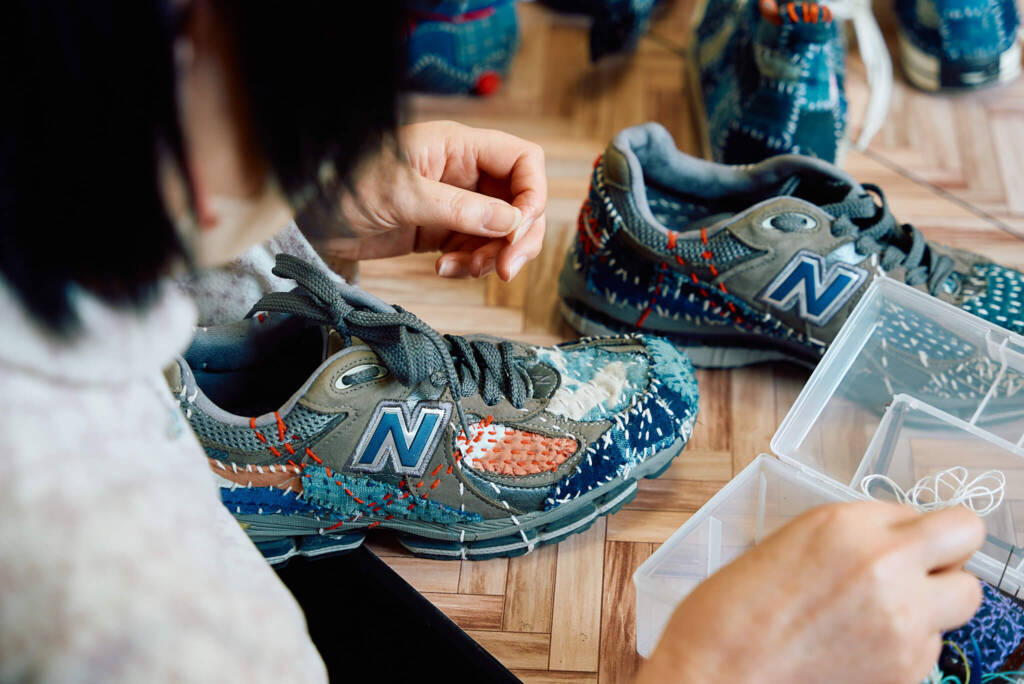
h: What was the turning point in the Sashiko Gals’ journey from a small-scale recovery project to an internationally recognized group collaborating with major fashion houses? What have been the most significant challenges and rewards in navigating that shift?
AF: I believe the turning point came in March 2024, when we restarted as Sashiko Gals. That moment brought a wave of new attention from people who had never heard of Sashiko before. Since the project originally began after the 2011 earthquake, memories of that time have naturally faded over the years. So being able to reintroduce it as something new and positive—and to have many people connect with it again—has been the greatest reward.
h: The women in the group range in age from their forties to their eighties, carrying a lifetime of experience in their hands. How do age and heritage shape the work you do, and what do you think is needed to pass these traditions on to younger generations?
AF: The women in our group have a wealth of life experience, and that depth of character gives their Sashiko work a profound sense of warmth and meaning. To carry this tradition forward, we are developing an educational programme that connects directly to our mission of ‘creating and sustaining local industry’. We’ve already begun teaching classes at nearby high schools, and we’re gradually preparing to welcome apprentices from around the world. Of course, this requires both people and funding, so the support of many individuals and companies is essential.
h: Sashiko dates back to the Edo period, once practiced among the wives of fishermen and farmers. Its motifs—Asanoha (hemp leaf, for growth and protection), Seigaiha (ocean waves, for happiness and fortune), Kikkō (turtle shell, for longevity)—form a symbolic language. How do these patterns and their meanings inform the Sashiko Gals’ work and philosophy today?
AF: One of the core missions of the Sashiko Gals is to ‘expand the possibilities of Sashiko’. We believe that tradition continues to live only when it evolves and adapts to the times. That’s why we reinterpret traditional Sashiko patterns through a contemporary lens, allowing them to change and grow with each generation.
h: The Sashiko Gals have become a bridge between generations, between the local and the global, between handmade and high fashion. Looking forward, what kind of legacy do you hope your work will leave?
AF: Among Japan’s traditional crafts, Sashiko is unique in that anyone can begin it—anytime, anywhere—with just a needle and thread. It brings healing to the mind and body, and the works themselves continue to draw attention from around the world. My hope is to share this beautiful culture globally and to see more and more people take part in it—each adding their own stitch to its ongoing story.
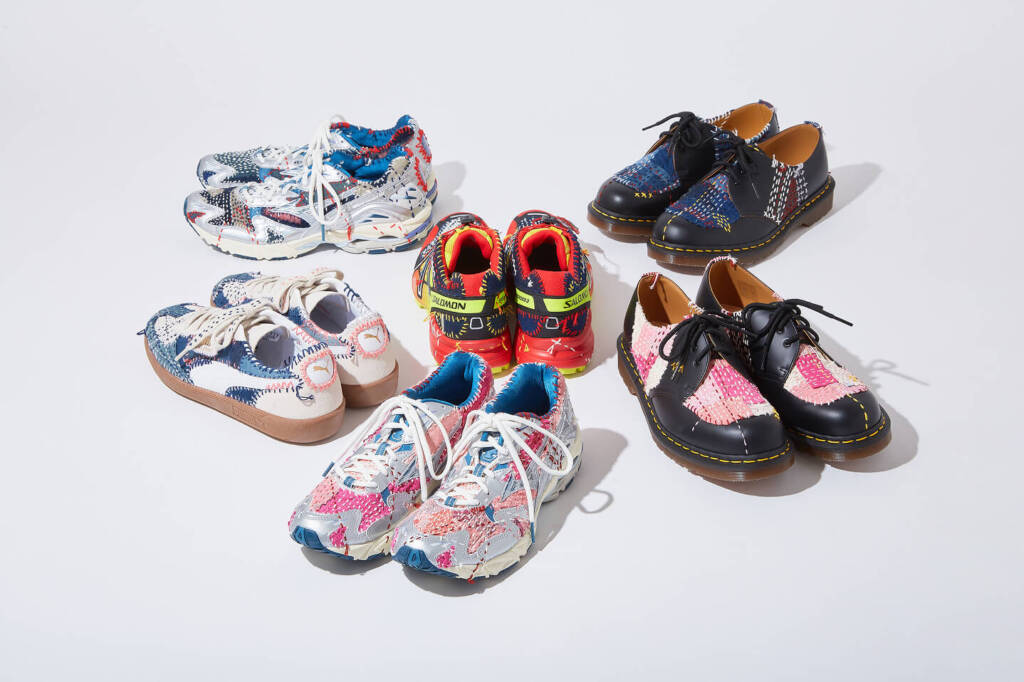
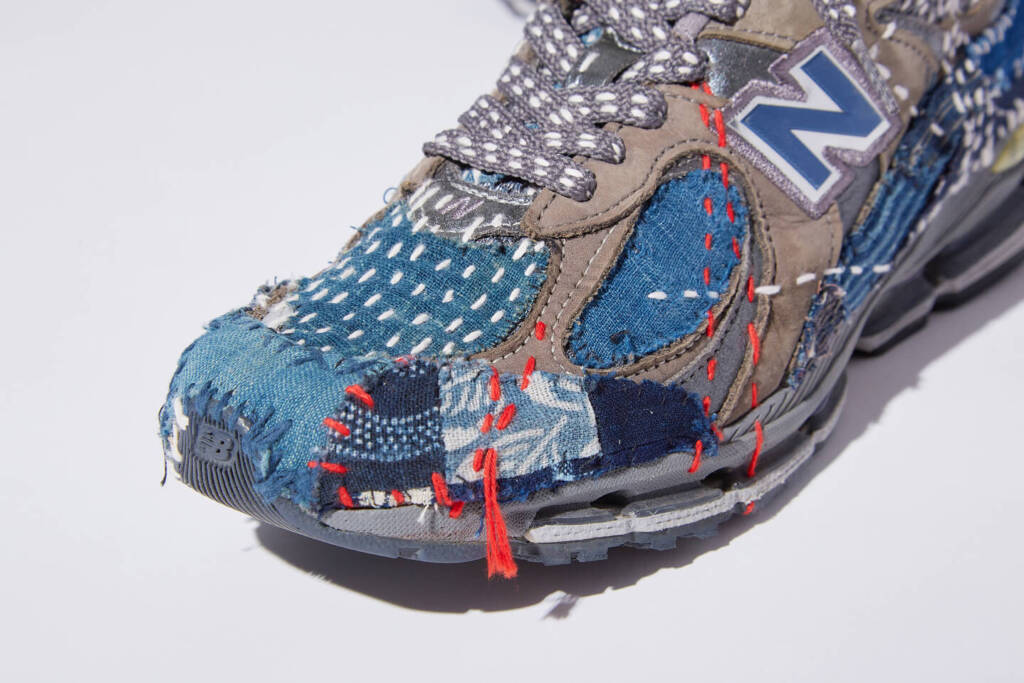


All images courtesy of MOONSHOT LTD
Words: ISABELLA MICELI

